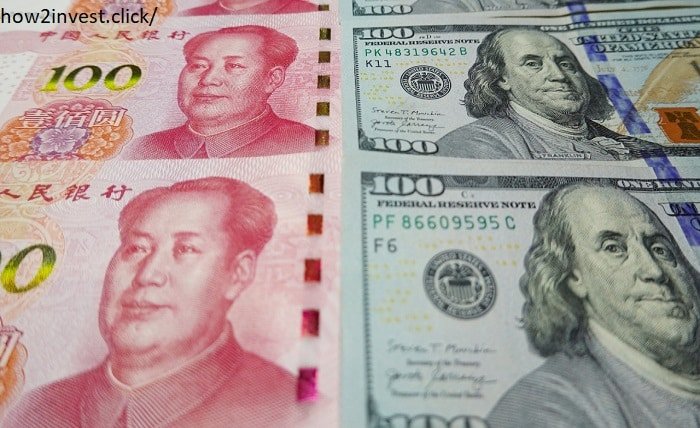The Dollar to RMB Exchange Rate

Introduction
The dollar to RMB exchange rate is a critical indicator of the economic relationship between the United States and China. As the world’s two largest economies, the exchange rate between the U.S. dollar (USD) and the Chinese renminbi (RMB) influences global trade, investment flows, and economic policies. Understanding this exchange rate requires a grasp of various economic factors, historical trends, and policy decisions.
Historically, the dollar to RMB exchange rate has been subject to fluctuations influenced by factors such as trade balances, inflation rates, interest rates, and political stability. The People’s Bank of China (PBOC) plays a significant role in managing the RMB’s value, often intervening in the foreign exchange market to stabilize the currency.
For businesses engaged in international trade, the dollar to RMB exchange rate affects pricing, profit margins, and competitiveness. Similarly, investors in foreign exchange markets closely monitor this rate to make informed decisions. Travelers also need to understand the exchange rate to budget their expenses accurately.
Historical Trends in the Dollar to RMB Exchange Rate
Examining the historical trends of the dollar to RMB exchange rate reveals the evolving economic landscape between the U.S. and China. In the past, the RMB was pegged to the U.S. dollar, ensuring a stable exchange rate. However, in 2005, China moved towards a managed float system, allowing the RMB to fluctuate within a narrow band against a basket of currencies.
Over the years, significant events have impacted the dollar to RMB exchange rate. The global financial crisis of 2008 led to a temporary appreciation of the RMB as China implemented stimulus measures. Conversely, trade tensions between the U.S. and China have often resulted in volatility, with tariffs and trade policies influencing market perceptions.
In recent years, the RMB has seen a gradual appreciation against the dollar, reflecting China’s economic growth and increasing global influence. However, the exchange rate remains sensitive to global economic conditions and domestic policy changes. Understanding these historical trends helps predict future movements and informs strategic decisions for businesses and investors.
Factors Influencing the Dollar to RMB Exchange Rate
Several factors influence the dollar to RMB exchange rate, making it a complex and dynamic metric. One of the primary factors is the trade balance between the U.S. and China. A surplus in China’s favor often leads to RMB appreciation, while a deficit can have the opposite effect.
Inflation rates also play a crucial role. Higher inflation in China compared to the U.S. can lead to a depreciation of the RMB, as goods and services become relatively more expensive. Conversely, lower inflation can strengthen the RMB. Interest rates are another critical factor. Higher interest rates in the U.S. can attract foreign capital, leading to a stronger dollar and a weaker RMB.
Political stability and economic policies in both countries significantly impact the exchange rate. For example, changes in trade policies, tariffs, or sanctions can cause immediate fluctuations. Additionally, the PBOC’s interventions, such as buying or selling foreign currency reserves, can directly influence the RMB’s value.
The Role of the People’s Bank of China in the Dollar to RMB Exchange Rate
The People’s Bank of China (PBOC) plays a pivotal role in managing the dollar to RMB exchange rate. Unlike many central banks, the PBOC actively intervenes in the foreign exchange market to stabilize the RMB and support economic policy goals.
The PBOC employs various tools to influence the exchange rate. One common method is the adjustment of the central parity rate, which is the reference rate around which the RMB is allowed to fluctuate. By setting this rate, the PBOC can guide market expectations and control excessive volatility.
Foreign exchange reserves are another tool. The PBOC can buy or sell foreign currencies to influence the supply and demand of the RMB. During periods of excessive depreciation or appreciation, these interventions help maintain a stable exchange rate.
Additionally, the PBOC implements monetary policies such as interest rate adjustments and liquidity measures to support the RMB’s stability. These actions reflect China’s broader economic goals, including maintaining competitiveness in global trade and supporting domestic economic growth.
Impact of the Dollar to RMB Exchange Rate on Global Trade
The dollar to RMB exchange rate has significant implications for global trade. As China is a major exporter and importer, fluctuations in the exchange rate can affect trade flows, pricing strategies, and profit margins for businesses worldwide.
For exporters in China, a weaker RMB makes Chinese goods cheaper and more competitive in international markets, boosting export volumes. Conversely, a stronger RMB can reduce competitiveness, leading to lower export growth. Importers in China also feel the impact, as a stronger RMB makes foreign goods cheaper, while a weaker RMB increases import costs.
In the U.S., changes in the dollar to RMB exchange rate affect the competitiveness of American goods in China. A stronger dollar can make U.S. exports more expensive and less attractive, while a weaker dollar can boost demand for American products.
Global supply chains are also influenced by the exchange rate. Multinational companies with operations in both countries must manage currency risk to optimize production costs and pricing strategies. Understanding these impacts helps businesses navigate the complexities of international trade and make informed decisions.
Investing in the Dollar to RMB Exchange Rate
Investors can capitalize on the dollar to RMB exchange rate through various financial instruments and strategies. Foreign exchange (forex) trading is one of the most direct methods, where investors buy and sell currencies based on anticipated movements in the exchange rate.
Another investment avenue is through currency futures and options. These derivatives allow investors to hedge against potential losses or speculate on future exchange rate movements. For example, a futures contract might lock in an exchange rate for a future date, providing certainty for businesses and investors.
Exchange-traded funds (ETFs) focused on the RMB or related assets offer another way to gain exposure to the dollar to RMB exchange rate. These funds invest in RMB-denominated assets, providing a diversified and convenient investment option.
Additionally, investing in Chinese stocks or bonds can indirectly expose investors to exchange rate fluctuations. Changes in the dollar to RMB exchange rate can impact the value of these investments, influencing returns. Understanding these investment opportunities and risks is crucial for maximizing potential gains and managing currency risk.
The Future of the Dollar to RMB Exchange Rate
Predicting the future of the dollar to RMB exchange rate involves analyzing economic trends, policy decisions, and geopolitical developments. As China continues to grow and integrate into the global economy, the RMB’s role is likely to expand, potentially leading to increased volatility and opportunities.
One potential trend is the RMB’s inclusion in global financial markets. Efforts to internationalize the RMB, such as its inclusion in the International Monetary Fund’s (IMF) Special Drawing Rights (SDR) basket, reflect China’s ambition to make the RMB a global reserve currency. This could lead to greater demand for the RMB and influence the dollar to RMB exchange rate.
Technological advancements, such as digital currencies and blockchain, may also impact the exchange rate. China’s development of the digital yuan aims to modernize the financial system and increase the RMB’s international use, potentially affecting its exchange rate dynamics.
Geopolitical factors, including trade negotiations and diplomatic relations, will continue to play a crucial role. Any significant policy changes or agreements between the U.S. and China can lead to immediate and significant shifts in the exchange rate. Monitoring these developments is essential for anticipating future movements.
The Dollar to RMB Exchange Rate and Inflation
Inflation is a critical factor influencing the dollar to RMB exchange rate. When inflation rates differ significantly between the U.S. and China, it impacts the purchasing power of their respective currencies and, consequently, the exchange rate.
Higher inflation in China compared to the U.S. tends to depreciate the RMB, as the value of goods and services rises, reducing the currency’s purchasing power. This can lead to higher costs for imports and lower export competitiveness. Conversely, lower inflation in China can strengthen the RMB, as the currency retains more value relative to the dollar.
The PBOC monitors inflation closely and may adjust monetary policies, such as interest rates, to control inflation and stabilize the exchange rate. For example, raising interest rates can attract foreign capital, strengthening the RMB, while lowering rates can boost domestic spending but potentially weaken the currency.
Understanding the relationship between inflation and the dollar to RMB exchange rate helps businesses and investors make informed decisions. By anticipating inflation trends and their impact on the exchange rate, they can develop strategies to mitigate risks and optimize returns.
The Dollar to RMB Exchange Rate and Economic Growth
Economic growth is another key factor influencing the dollar to RMB exchange rate. The relative economic performance of the U.S. and China affects investor confidence, capital flows, and currency demand.
When China’s economy grows rapidly, it attracts foreign investment, increasing demand for the RMB and potentially leading to appreciation. Strong economic growth also boosts export competitiveness, further supporting the RMB. Conversely, slower economic growth can reduce investor confidence and demand for the RMB, leading to depreciation.
In the U.S., economic growth influences the dollar to RMB exchange rate similarly. Strong growth attracts foreign capital, strengthens the dollar, and can lead to a weaker RMB. Conversely, economic slowdowns can reduce dollar demand and strengthen the RMB.
Government policies and economic indicators, such as GDP growth rates, employment figures, and industrial production, provide insights into economic performance and its impact on the exchange rate. Monitoring these indicators helps anticipate exchange rate movements and informs strategic decision-making.
Conclusion
The dollar to RMB exchange rate is a complex and dynamic metric that reflects the economic relationship between the U.S. and China. Understanding the factors influencing this exchange rate, including trade balances, inflation, interest rates, and political stability, is crucial for businesses, investors, and travelers.
Historical trends and the role of the People’s Bank of China provide insights into past and future movements. The exchange rate’s impact on global trade, investment opportunities, and economic growth underscores its significance in the global economy.
As China continues to integrate into global financial markets and technological advancements reshape the financial landscape, the dollar to RMB exchange rate will remain a critical focus for stakeholders worldwide. By staying informed and adapting to changing conditions, they can navigate the complexities of the foreign exchange market and make strategic decisions.
FAQs
- What factors influence the dollar to RMB exchange rate?
- The dollar to RMB exchange rate is influenced by trade balances, inflation rates, interest rates, political stability, and interventions by the People’s Bank of China.
- How does inflation affect the dollar to RMB exchange rate?
- Higher inflation in China compared to the U.S. can lead to a depreciation of the RMB, while lower inflation can strengthen it. Inflation impacts the purchasing power of the currency and its value relative to the dollar.
- What role does the People’s Bank of China play in the exchange rate?
- The PBOC manages the dollar to RMB exchange rate through interventions in the foreign exchange market, adjusting the central parity rate, and implementing monetary policies to stabilize the currency.
- How can investors benefit from the dollar to RMB exchange rate?
- Investors can trade forex, invest in currency futures and options, or buy ETFs and Chinese stocks to gain exposure to the exchange rate. These investments offer opportunities for profit based on exchange rate movements.
- What is the future outlook for the dollar to RMB exchange rate?
- The future of the dollar to RMB exchange rate will be influenced by China’s economic growth, internationalization of the RMB, technological advancements, and geopolitical developments. Monitoring these factors is essential for anticipating future trends




